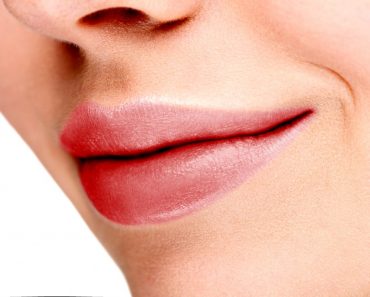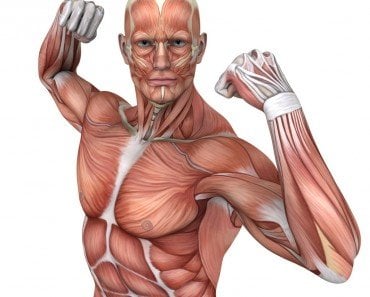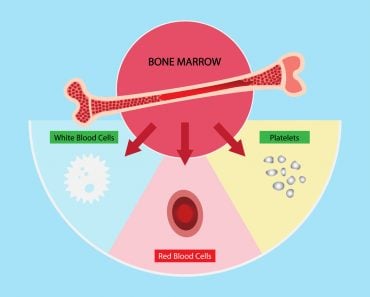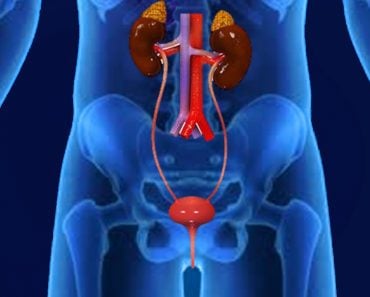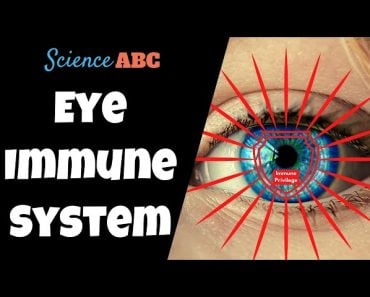Table of Contents (click to expand)
The skin is the body’s largest organ and it has many functions. The skin protects the body from the external environment, stores fat and water, regulates body temperature, synthesizes vitamin D, and produces sebum. The skin also acts as a sensory organ, allowing the body to feel touch, pressure, pain, and temperature.
The human skin has a wide array of functions, including:
- Protects against the external environment
- Acts as a ‘storage unit’
- Synthesizes Vitamin D
- Plays the role of a sensory organ
- Regulates body temperature and electrolyte levels
- Produces sebum
The human body is a compilation of complex organs, including the stomach, heart, kidneys, bones, muscles, cartilage, etc. All these organs are arranged in our body in an organized fashion – everything is exactly where it’s supposed to be and all of the organ systems are encapsulated on the outside by another organ—the skin.
The human skin is like an external façade for the human body. It is also what makes up your external appearance. Therefore, it’s not surprising that when you enter a room, people notice your skin and external features first, instead of your bones, heart and other organs.
Your skin is a soldier that can talk!
Your skin is the first introduction to anyone you meet; it speaks volumes. When you meet someone for the first time, owing to the wrinkles on your skin or their absence, people are able to gauge your age. When you enter a doctor’s office and your skin looks pale, it tells the doctor that you’re not in the “best of health”. If your skin is yellowish, it indicates that you might have jaundice or hepatitis.
Skin is also your first line of defense against external harmful factors. It protects you from UV rays, serves as a barrier between you and harmful microorganisms, and prevents dehydration through its thermoregulatory function, which helps in maintaining homeostasis. The role of the human skin in providing immunity to us is more elaborately discussed in the video below:
Your skin also allows you to feel various bodily sensations, like pressure, cold, warmth, pain and itching. These sensations trigger a reflex that helps you withdraw your hand if you happen to cut yourself or burn it on the stove.
In order for human skin to perform the aforementioned functions, we need to understand the structure of this massive organ.
Recommended Video for you:
How Many Layers Of Skin Does A Human Have?
The skin in composed of three layers, namely the epidermis, dermis, and hypodermis.
Epidermis – This is the outer layer of the skin and while it is thinner than the dermis, it happens to be the tougher layer of the two, composed of five different layers of cells called:
- Stratum corneum
- Stratum lucidum
- Stratum granulosum
- Stratum spinosum
- Stratum germinativum
The epidermal layer of the skin is devoid of blood vessels and provides general protection to the organs inside. In areas such as the palms of our hands and soles of the feet, which require greater protection, this layer of the epidermis is usually thicker (5mm), as opposed to the average thickness of 1-2 mm found elsewhere in the body. The epidermis is also a rapidly replicating layer that has the potential to repair itself from any damage it may suffer. To be clear, that doesn’t mean it can self-heal after a massive trauma, in which case medical intervention is needed!
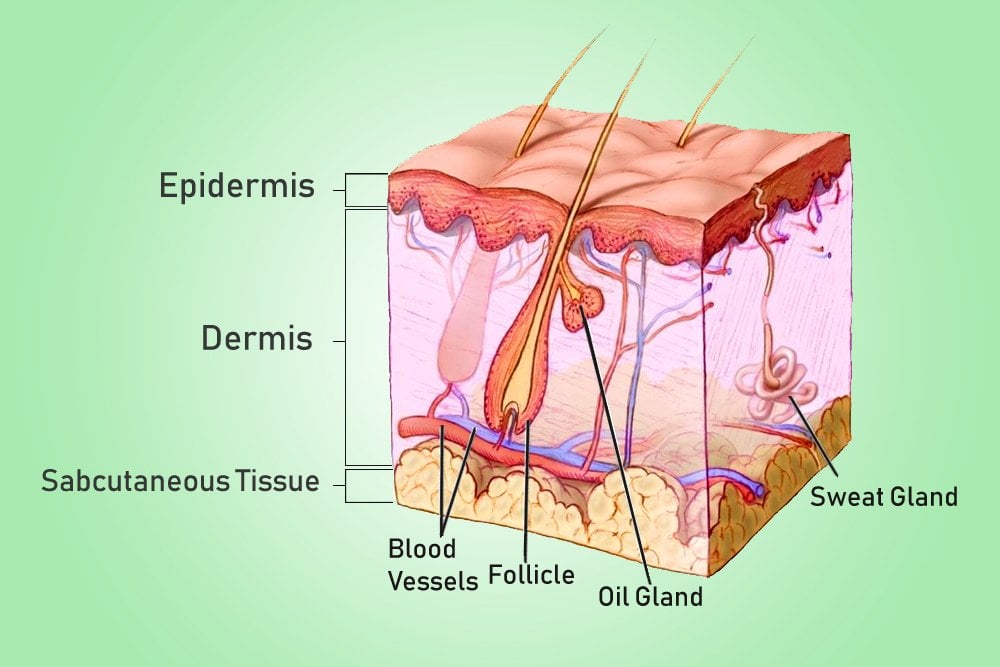
Stratum corneum, also known as the horny layer, is about 10-20 mm thick and is made of flat, polyhedral-shaped cells called corneocytes. These cells lose their nuclei as a result of pressure and become dead cells. Corneocytes are usually composed of keratin enclosed in cell envelopes, while the intercellular space between the corneocytes mainly consists of lipids. These lipids are essential for this layer to function as a competent skin barrier. Stratum lucidum (lucid=clear) exhibits a shiny appearance and resembles a homogeneous translucent zone.
Stratum granulosum consists of flattened rhomboid cells that consist of keratohyalin, a precursor to keratin. Stratum spinosum possesses a spine-like projection and is therefore also called the prickle cell layer. Stratum germinativum consists of cells being produced by mitotic division. These cells, called keratinocytes, constantly migrate towards the outer surface of the epidermis, where they are gradually shed and replaced by newer cells from below. Scattered between the keratinocytes are melanocytes, which produce a pigment called melanin—the chemical factor that determines our skin color.
Dermis – Firmly stuck to the outer layer (epidermis) is the second layer of skin, called the dermis. This layer is made of a mesh of tough elastic collagen fibers. These fibers render the layer strong and stretchy. The dermis is infiltrated by a network of nerve fibers and tiny blood vessels called capillaries. Capillaries carry out the essential functions of transporting nutrients and oxygen to the skin.
Hypodermis or subcutaneous layer – This layer is mostly composed of fat and connective tissue. The fat here plays an important role in shock absorption, thus protecting the bones and everything else inside from impacts and injuries. Just like the dermal layer of skin, the subcutaneous layer also contains blood and lymph vessels, as well as nerves, sweat glands, oil glands and hair roots.
Functions Of The Skin
- Protection from the environment – As stated earlier, the skin acts as a barrier between your internal system and the external environment, which includes harmful bacteria, toxins, UV rays, etc. The skin acts as a mighty shield and protects your body from these potential dangers. The skin has a number of mechanisms to deal with bacteria, injuries, and infections. The skin secretes lysozymes, which help to destroy bacteria. Imagine that you’ve hurt yourself and there’s a risk of the wound becoming infected. In a scenario like this, the keratinocytes in the skin secrete cytokines, such as interleukins, α-tumor necrosis factor, and γ-interferon, all of which play an important role in wound healing and tissue repair. They also release antimicrobial peptides, which prevent injury from being invaded by microbes.
- Sensory organ – The skin is the largest known sensory organ of our body. How else do you think we feel every tiny thing touching the surface of our skin? We can feel hot things, cold things, or even the minute sense of an ant crawling on us! All of this happens due to the presence of numerous nerve endings innervating the skin, carrying all sensations of touch, pain, pressure and temperature to our brain, at which point our brain reciprocates with an appropriate response.
- Storage – Skin is a storehouse of fat, water, sugar, salts, etc. In times of need, we know that our skin has our back!
- Regulation of body temperature and electrolytes – Our body needs to maintain a core body temperature of approximately 37 degrees Celsius for the normal functioning of all bodily processes. When your body needs to cool down and lose heat, sweat glands in the skin secrete sweat and are a critical part of heat loss. Through the process of sweating, water and salts are also excreted, which helps in maintaining water and electrolyte balance in the body. In a cold environment, the lipid content in the skin helps retain heat in the body. Another mechanism of conserving heat is by means of body hair. In cold conditions, tiny muscles around the shaft of the hair contract and pull the hair vertically – thus giving you goose bumps! Thus, depending on the external environment and internal body conditions, the skin plays an extremely crucial role in thermoregulation.
- Synthesis of melanin and vitamin D – When the skin is exposed to UV light, the cells of the skin produce melanin and vitamin D, which is essential for bone formation and better overall health.
- Production of sebum – the sebaceous glands in the skin secrete sebum, which helps keep the skin soft and moist.
- Production of body hair – the skin contains hair follicles that produce various types of hair throughout our body. Hair on the body contributes to protection from injury, helps in regulating body temperature, and plays an important role in personal appearance.
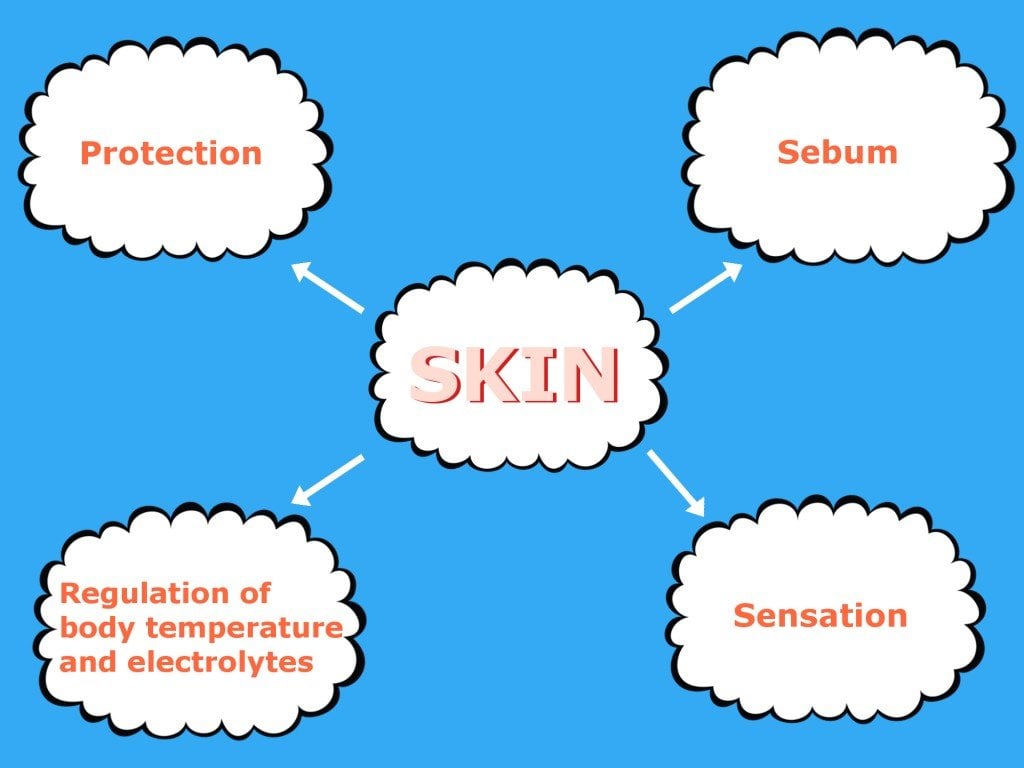
To conclude, we now understand that the skin is a multilayered, complex organ with a number of appendages and glands (namely sweat and sebaceous glands), which jointly perform many beneficial and crucial functions to maintain the biological economy of an organism. We must also keep in mind that the skin undergoes changes with age, time, injuries, burns, diseases, etc. and it is important to maintain healthy skin by taking appropriate measures in terms of hygiene and care.
References (click to expand)
- Physiology of normal skin - WHO Guidelines on Hand ....
- Anatomy, Skin (Integument), Epidermis - StatPearls.
- Freinkel D. R. K.,& Woodley D. (2001). The Biology of the Skin. CRC Press
- Boer, M., Duchnik, E., Maleszka, R., & Marchlewicz, M. (2016). Structural and biophysical characteristics of human skin in maintaining proper epidermal barrier function. Advances in Dermatology and Allergology. Termedia Sp. z.o.o.

